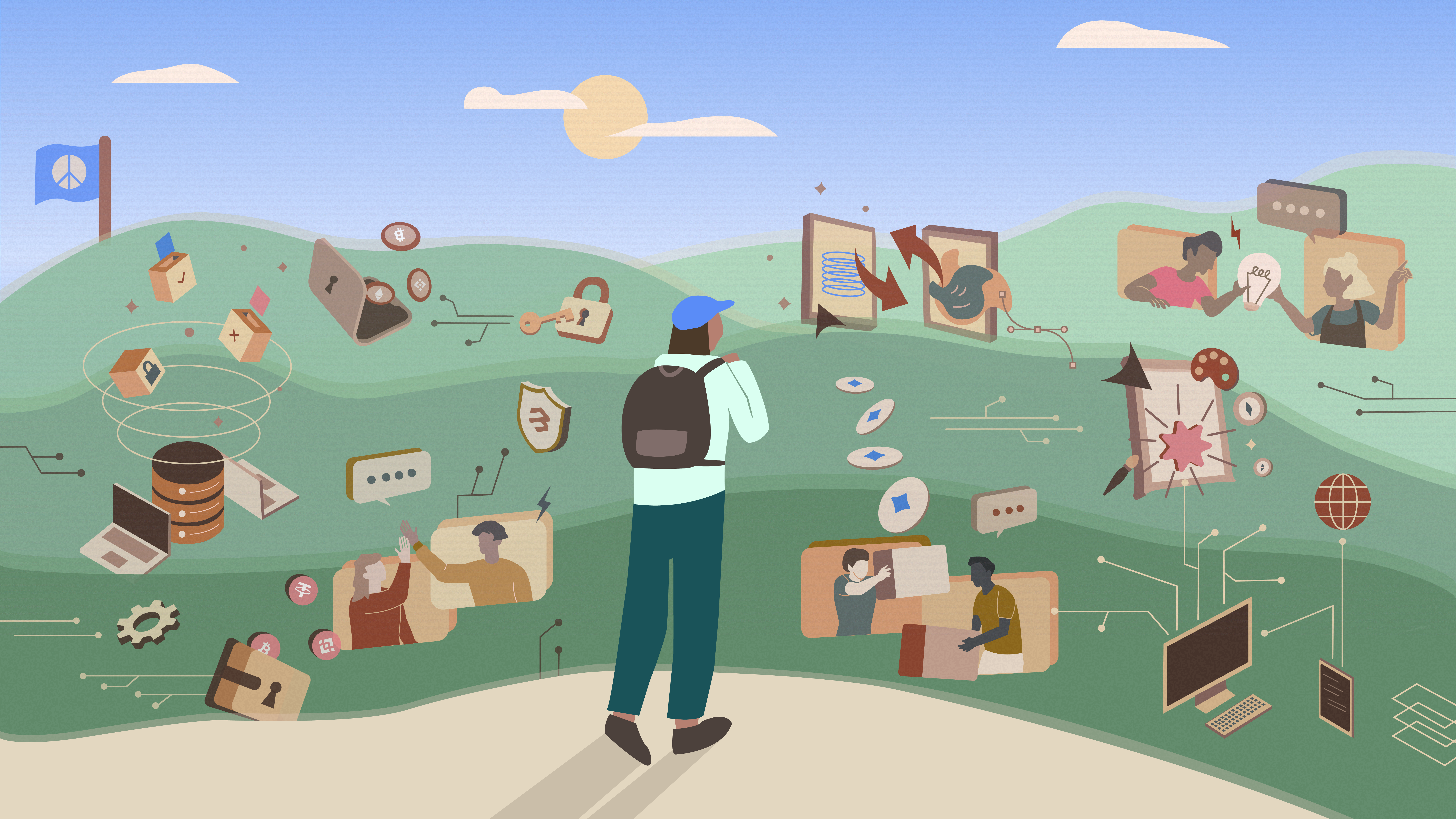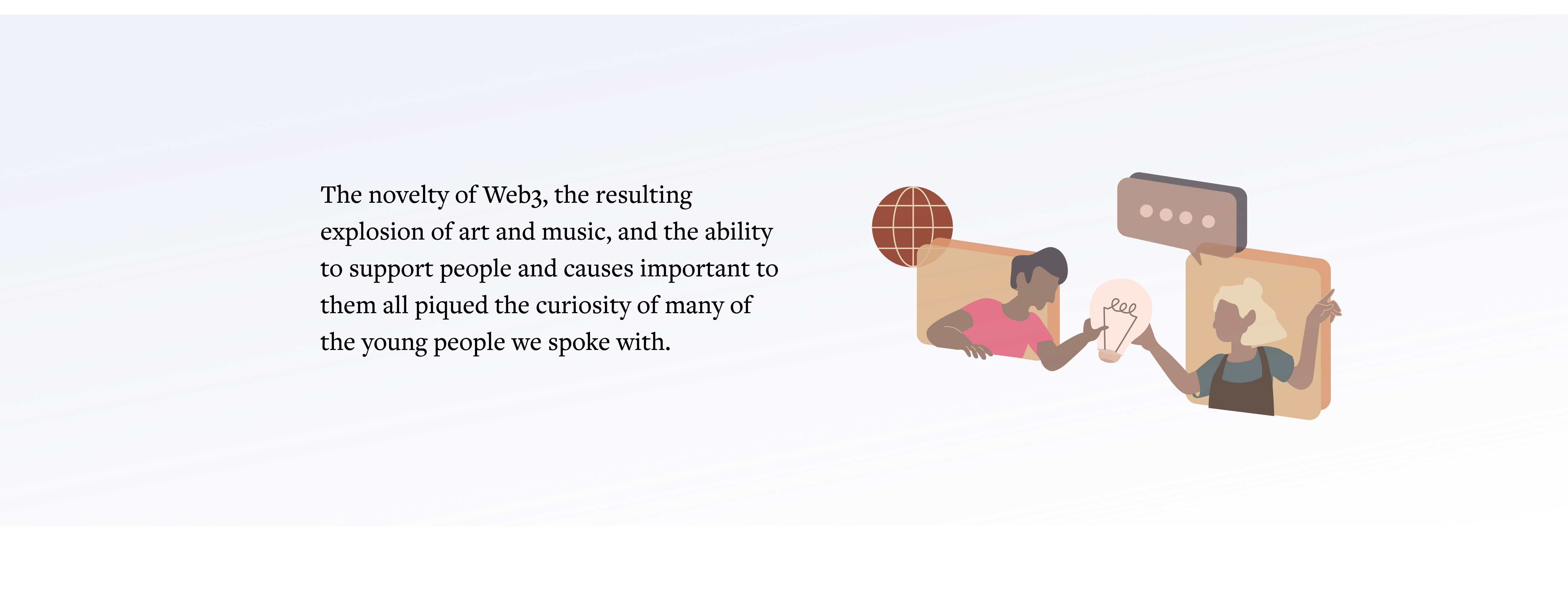Perspectives
Designing the Future with AI
A mini-series unpacking AI and discussing our role in its implementation
Artefact’s staff reflects on AI’s potential impact on individuals and society by answering questions prompted by the Tarot Cards of Tech. Each section contains videos that explores a tarot card and provides our perspectives and provocations.
The Tarot Cards of Tech was created to help innovators think deeply about scenarios around scale, disruption, usage, equity, and access. With the recent developments and democratization of AI, we revisited these cards to imagine a better tech future that accounts for unintended consequences and our values we hold as a society.

Cultural implications for youth
Jeff Turkelson, Senior Strategy Director
Transcript: I love that this card starts to get at, maybe some of the less quantifiable, but still really important facets of life. So, when it comes to something like self-driving cars, which generative AI is actually really helping to enable, of course people think about how AI can replace the professional driver, or how AI is generally coming for all of our jobs.
But there are so many other interesting implications. So for example, if you no longer need to drive your car, would you then ever need to get a license to drive? And if we do away with needing a license to drive, then what does that mean for that moment in time where you turn 16 years old and you get newfound independence with your drivers license? If that disappears, that could really change what it means to become a teenager and become a young adults, etc. So what other events or rituals would AI disrupt for young adults as they grow older?
Value and vision led design
Piyali Sircar, Lead Researcher
Transcript: This invitation to think about the impact of incorporating gen AI into our products is really an opportunity to think about design differently. We should be asking ourselves, “What is our vision for the futures we could build?” and once we define those, the next question is, “Does gen AI have a role to play in enabling these futures?” Because the answer may be “no”, and that should be okay if we’re truly invested in our vision. And if the answer is “yes”, then we need to try to anticipate the cultural implications of introducing gen AI into our domain space. For example, “How will this shift the way people spend time? How will it change the way they interact with another? What do they care about? What does this product say about society as a whole?” Just a few questions to think about.

Introducing positive friction
Chad Hall, Senior Design Director
Transcript: The ‘Big Bad Wolf’ card reminds me to consider not only which AI product features are vulnerable to manipulation, but also who the bad actors might be. Those bad actors could be a user, it could be us, our teams, or even future teams. So, for example, while your product might not misuse data now, a future feature could exploit it.
A recent example that comes to mind is two students who added facial recognition software to AI glasses with a built-in camera. They were able to easily dox the identities of just about anyone they came across in their daily life.
I think product teams need to introduce just enough positive friction in their workflows to pause and consider impacts. Generative AI is only going to ask for more access to our personal data to help with more complex tasks. So the reality is, if nobody tries to ask the question, the questions are never going to get asked.
Minimizing harm in AI
Neeti Sanyal, VP Creative
Transcript: I think it’s important to ask whether AI could be a bad actor? Even when you’re not trying to produce misinformation with generative AI, in some ways it is inherently doing that. I am concerned about the potential for generative AI to cause harm in a field that has low tolerance for risk, things like health care or finance. An example that comes to mind is a conversational bot that can give the wrong mental health advice to someone that is experiencing a moment of crisis.
One exciting way that companies are addressing this is by building a tech stack that uses both generative and traditional AI. And it’s the combination of these techniques that help minimize the chance of hallucinations and can create outputs are much more predictable.
If we are thoughtful in how the AI is constructed in the first place, we can help prevent AI from being the bad actor.

Building job security
Rachael Cicero, Associate Design Director
Transcript: One thing we keep hearing about is the disappearing workforce, but often I think we’re overlooking the fact that humans will continue to exist in and contribute to society. Instead, I’d like to see a shift the conversation from the disappearing workforce to the unique contributions of human and AI collaboration. Consider civic technology, where generative AI can be used for things like supporting the process of unemployment applications. AI can help with document recognition, which can really reduce the load on human staff, and also accelerate response time for applicants. To me, that collaboration isn’t about replacing jobs but really about enhancing them.
The key to that is investing in reskilling. By including the perspectives of people affected in the design of AI systems, we can better understand the tasks they want automated. The goal being to create a future where AI and humans can work together, enhancing each other’s strengths, and ensuring that everyone has an opportunity to thrive in a pretty evolving job market.
Transforming tradition
Max West, Principal Designer
Transcript: This card reminds me of how cable TV technology reshaped media jobs. Remember Video Jockeys on the popular 90s MTV show, Total Request Live? VJs had evolved from selecting and remixing music, like their traditional radio counterparts, to focusing on engaging with crowds, talking to celebrities, and orchestrating pop cultural moments.
Now take the cable TV example and apply it to AI transforming an industry like education. Teacher’s jobs could similarly shift to a more social focus. An AI-powered app could tailor a math or science lesson to a student’s unique cognitive abilities, while the teacher can focus more on the physical, interpersonal, and social aspects of learning. In the same way that VJs would provide crowd-pleasing moments between music videos, educators might find themselves in a similar “hosting” role for the classroom.
So it’s less about what disappears and more about what can transform. So, while roles may change with AI, it could create time and space for richer, more personal experiences among groups.






